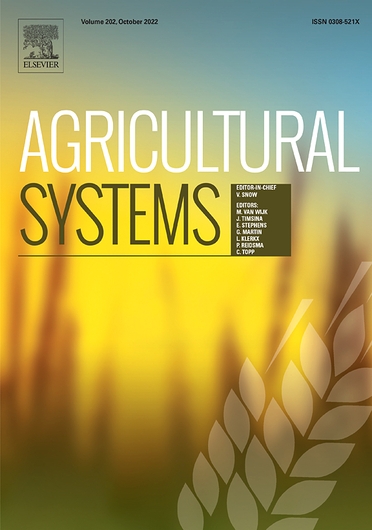Relatives, neighbors, or friends: Information exchanges among irrigators on new on-farm water management tools
Abstract
CONTEXT: On-farm water application in Ethiopia, as in much of Sub-Saharan Africa, is dominated by furrow irrigation, which resulted in inefficient water uses and related economic and environmental problems. A recent project introduced two on-farm water management tools, called wetting front detectors and Chameleon sensors, to some farmers in Koga irrigation scheme and facilitated for other farmers in the quaternary canal, who did not receive the technology, to learn from farmers who installed the tools on their plots.
OBJECTIVES: The objective of this study is to investigate the role of different social ties on information exchanges among farmers when some farmers have the signal on how long to irrigate a field during an irrigation event from on-farm water management tools. The study explored the relative importance of being neighbors, friends, spatial proximity of farms, and project induced pairings.
METHODS: The study used a household survey data from all members of quaternary canals in the project that were in the technology, information, and control groups, as well as detailed network modules on how farmers with plots in the quaternary canal are associated with each other. A fixed effects econometric approach is used to control for time invariant household level and quaternary canal characteristics, while teasing out how the different social ties affect the information flow.
RESULTS AND CONCLUSIONS: The results show that being in purposeful friendships as indicated by knowing each other’s decision on the use of agricultural inputs and its outcome, as well as being spatially proximate as indicated by having farm plots next to each other or usually passing by each other’s plots play a significant role in determining whether information-recipient farmers received information from the technology-recipient farmers as expected. Being relatives or neighbors played a minor role to facilitate information exchanges on how long to irrigate. In addition, ad-hoc pairs of farmers between technology-recipient and information-recipient created through the project within the quaternary canal did not play a significant role above and beyond the existing social ties of friendships and spatial proximity.
SIGNIFICANCE: The findings have implications for effective ways of targeting in future scale up of such technologies as it informs that the roll out of such type of technologies and the extension services around it can better help technology diffusion and learning if they use friends and spatial proximates as anchors of information. That is, at times of over-subscription to such on-farm water management tools, information about the technology and the recommended duration of one irrigation turn can diffuse faster if the limited number of tools are distributed in such a way that friends and spatial proximates have access to a tool, rather than distributing the tools based on being neighbors or relatives.

